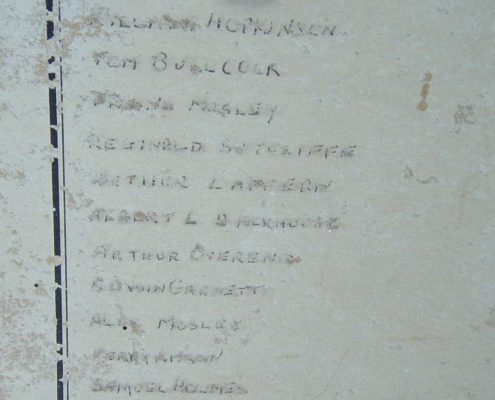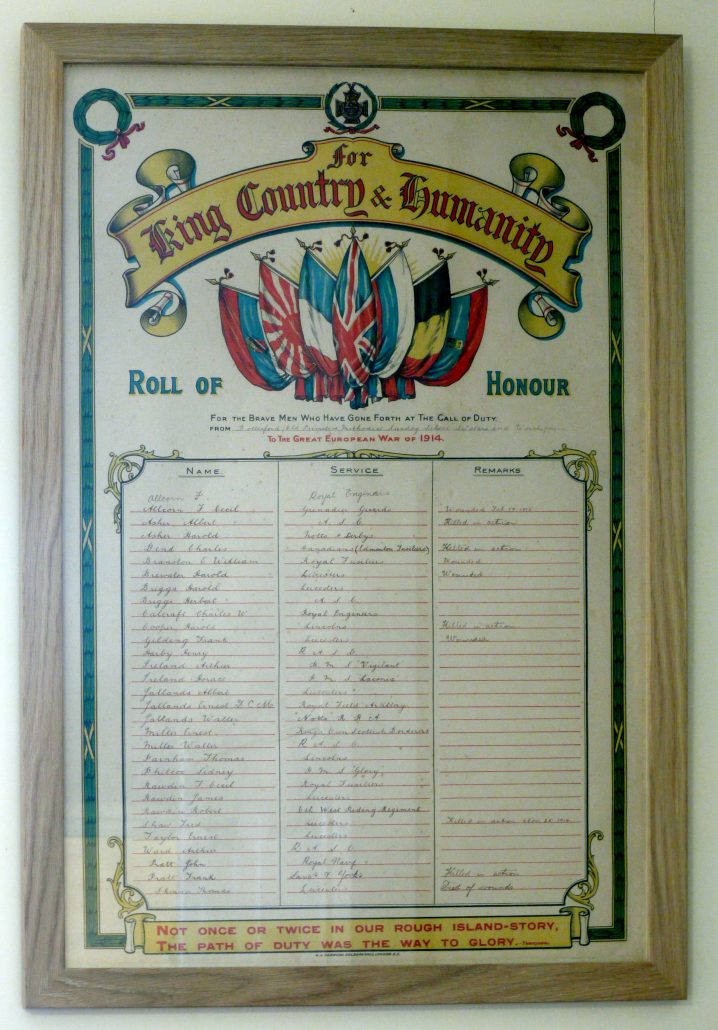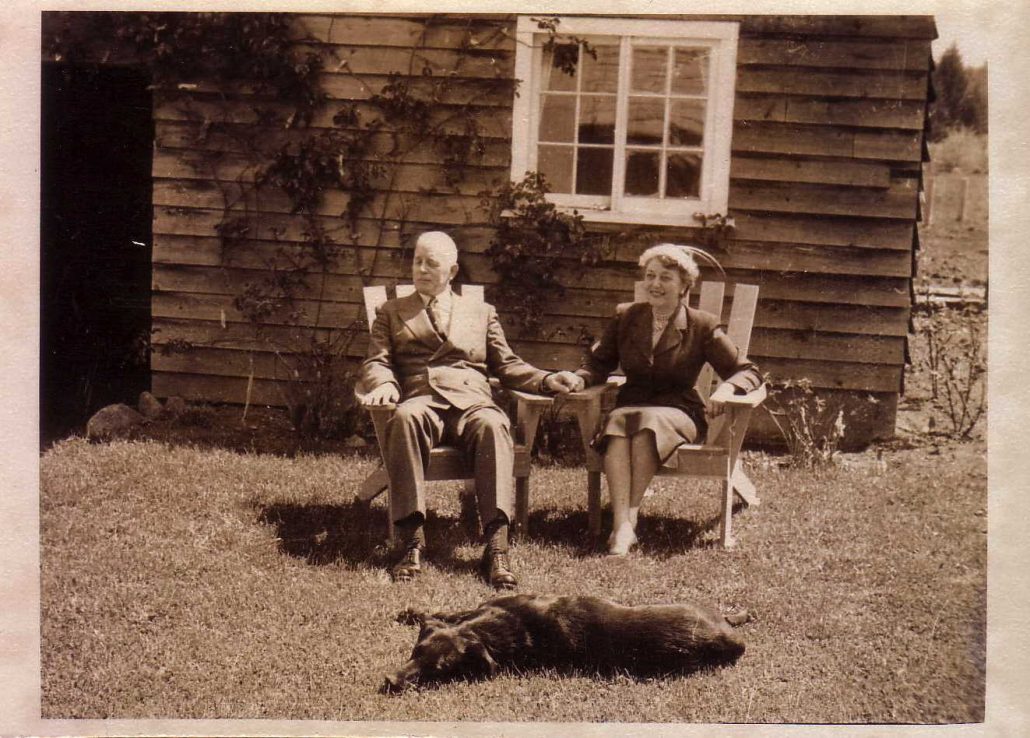The project is launching an appeal for donations to enable us to restore a recently discovered Roll of Honour that originally hung in the former Methodist Church at Farnhill, and names 60 local servicemen who served during World War 1.
We were always aware that the Farnhill Methodist Church, which closed a few years ago, once had a WW1 Roll of Honour as the local History Group has a photograph of it. However, having asked everyone we could think of who might know its whereabouts we believed it to be lost, then, it was unexpectedly handed in at one of our project events, by a former member of the church who had saved it.
Not surprisingly, the Roll of Honour is showing signs of age and is in a poor condition. It has become permanently warped and cannot be flattened out; the cardboard backing is crumbling away along the edges; the paper has signs of insect damage, paint splashes and surface deterioration; and all the colours on the decorative borders have faded, with some totally lost. The names of the men written on it are barely legible.
We have had it examined by an expert who has suggested that it could be conserved and then a digital copy created which would be put on permanent display in the village.
The Heritage Lottery Fund has agreed that we can use some of our project grant to cover most of the cost but we have to raise £260 ourselves and hope to obtain this by means of public donations and local fundraising.
If you would like to make a donation to help us restore the Farnhill Methodist Church WW1 Roll of Honour, please send a cheque made out to Kildwick & Farnhill Institute to the following address:
Farnhill WW1 Volunteers Project
Kildwick & Farnhill Institute,
Main Street,
Farnhill,
Keighley, BD20 9BJ
The current condition of the Roll
The roll is bent out of shape and cannot be flattened.

The Roll of Honour – bent out of shape
The cardboard backing is crumbling.

The Roll of Honour – cardboard backing crumbling
The surface has paint splashes.


Insects have eaten away the ink and bored through the paper.


The inked-in names have deteriorated – some are nearly impossible to read.

The Roll of Honour – the names have deteriorated
A lot of the colour has faded – with some colours lost altogether.

The Roll of Honour – colours faded
What can be done ?
The Roll can be conserved by:
- Removing it from its cardboard backing
- Removing the paint splashes
- Cleaning the surface
A high-quality digital copy of the Roll could then be created and further restoration carried out, using digital imaging techniques, including:
- Restoring the original colours, based on other examples of this type of Roll held in museums and archives
- Re-instating the names onto the digital copy
- Framing the restored Roll under UV-opaque glass
How might it look ?
Other Rolls of this design from other chapels have been restored.
This one is from a chapel in Bottesford, Leicestershire.

Bottesford WW1 Roll of Honour
How you can help
Please consider making a contribution to our appeal. In addition to the money we can use from our HLF project funding, we need to raise:
£260
If you would like to make a donation to help restore the Farnhill Methodist Church WW1 Roll of Honour, please send a cheque made out to Kildwick & Farnhill Institute, to the Farnhill WW1 Volunteers Project, Kildwick & Farnhill Institute, Main Street, Farnhill, Keighley, BD20 9BJ.



























